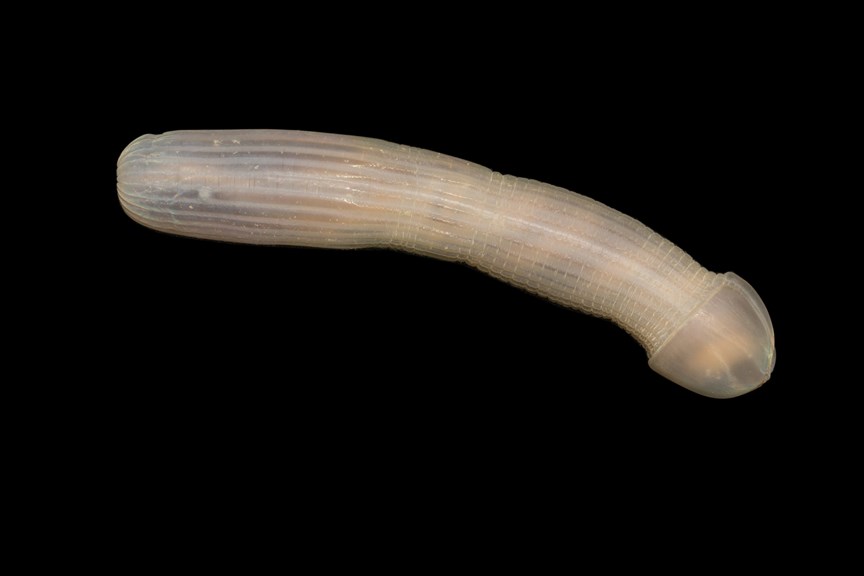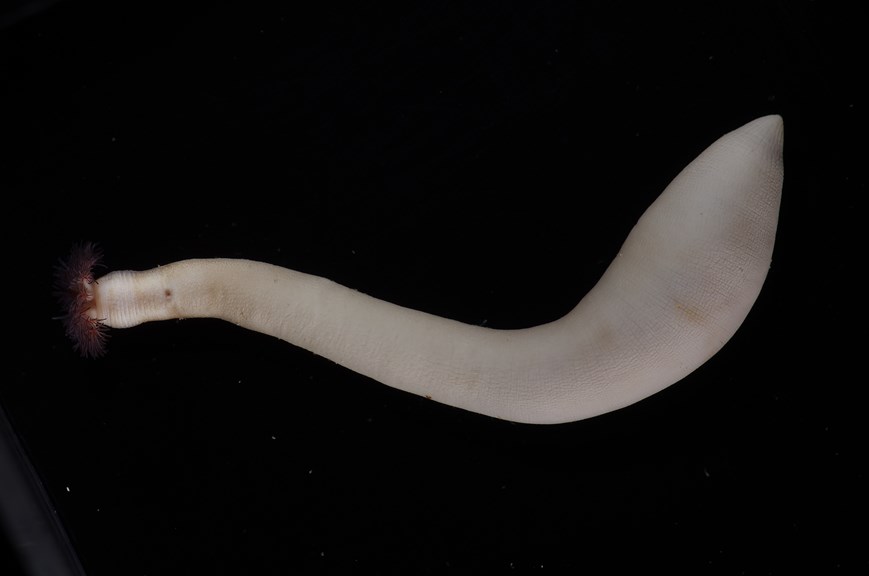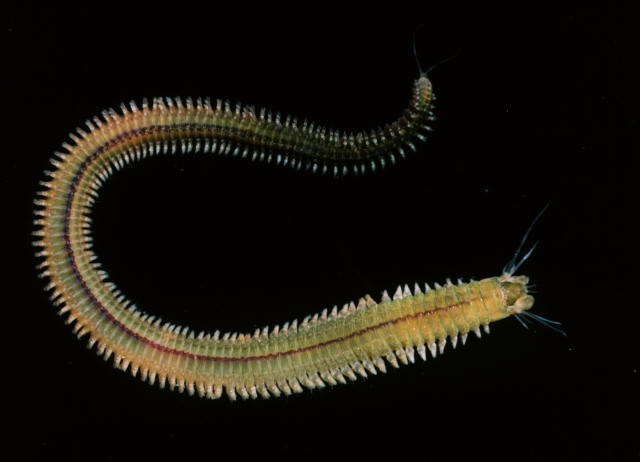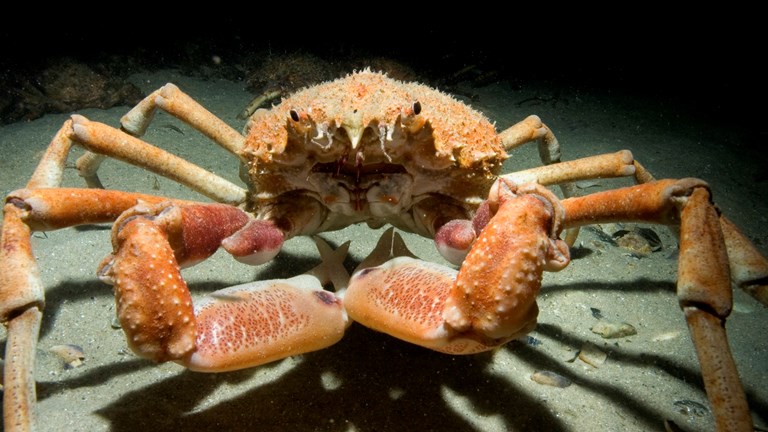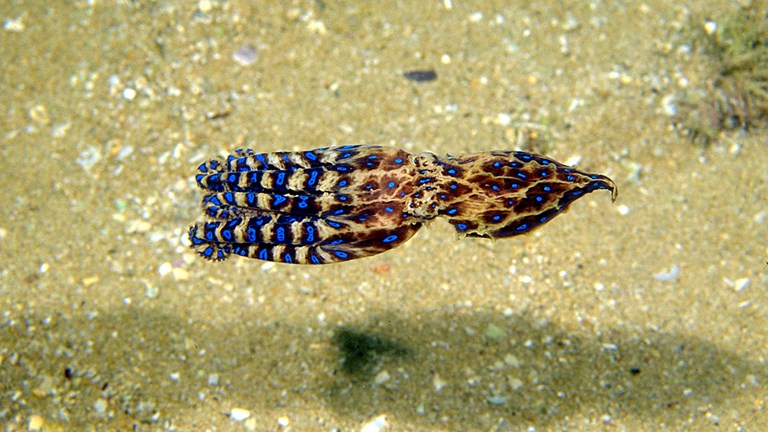Creature of the deep
The deep sea is home to a myriad of weird-looking creatures, but few weirder than this peanut worm, discovered at abyssal depths off eastern Australia by marine scientists from Museums Victoria.
The deep sea is home to a myriad of weird-looking creatures, but few weirder than this peanut worm, discovered at abyssal depths off eastern Australia by marine scientists from Museums Victoria.
Because of its coincidental similarity to the human penis, the peanut worm has become something of a media star – attracting even more attention than the faceless fish, the gorgeous red Coffinfish or the evocatively-named Shortarse Feelerfish.
All these creatures were among the finds fromSampling the Abyss, a research voyage led by Museum Victoria marine scientists to study the largest and deepest habitat on the planet, brought to light many creatures never seen before.
But the month-long journey aboard Marine National Facility research vessel Investigator is only the beginning. It will take years of research, comparison and classification to fully understand the wealth of knowledge dredged up from the depths.
Like all museum natural history specimens this peanut worm has tales to tell us about the environment where it lives. But it also poses questions that will take scientists at Museums Victoria and the CSIRO years to answer.
Where do I come from?
This peanut worm was found from depths as great as 4,000 metres (4 km!) deep. By comparison, nearby Port Phillip Bay is at most 30 metres deep, and if you travel across Bass Strait to Tasmania the water is never more than 100 metres deep. Animals like the peanut worm that live further from the continental shelf, in the abyssal deep sea, are rarely the same species as are found in shallow water.
Many species from the abyss can have a large range and scientists expect that this peanut worm might occur widely, at least in the southern oceans. But the abyss covers a huge area – nearly 70% of the Earth – and therefore we still have a lot to learn about the range of each species in the deep sea.
What is my name?
We don’t know yet! Very likely this peanut worm is a species in the genus Sipunculus, but taxonomists (scientists who describe and classify life on Earth) have not yet studied these samples in detail and it is quite likely that this peanut worm may be undescribed, meaning it represents a new species which is yet to be given a scientific name. Even in shallow seas, as many as one-third of all species seem to be undescribed and probably the proportion of new species is even greater in the deep sea, which remains little-studied.
Discovering what lives in the Australian deep sea, and describing the new species, was one of the purposes of the recent Museums Victoria abyssal expedition. Scientists will soon be comparing this peanut worm with other specimens known from elsewhere to answer this question.
Who are my relatives?
World-wide, there are about 160 species of peanut worm known so far, and until very recently little was known about their evolutionary relatives: all were classified in their own Phylum Sipuncula and this is still what most textbooks say. But in recent years genetic studies of information from DNA across all life forms have shown that peanut worms are not evolutionary loners, but should be classified among a much larger group of worms, the Phylum Annelida, most of which have bodies comprising many segments.
So peanut worms are related to other annelids including earthworms, leeches as well as the most numerous group of all, the polychaetes (for example the sandworms and lugworms familiar to anglers as fish bait). But even though peanut worms are now known to belong on a branch of the annelid evolutionary tree, they are still very ancient: there is a fossil peanut worm 520 million year old that looks very much like a peanut worm that we might find today. So peanut worms have formed a separate tribe hundreds of millions of years older than the dinosaurs. The ancestors of our peanut worm watched the dinosaurs evolve and become extinct, while they evolved and survived.
What is it like living in the deep sea?
Most of the deep sea floor is dark, cold black mud. At up to 10cm long, the peanut worm is unusually largeamong worms from this environment, perhaps because it has evolved to live in environments where there is little oxygen. Peanut worms can use their entire body wall for respiration rather than needing specialised gills and their biochemistry is adapted to low oxygen environments. Some shallow water peanut worms are also found in low-oxygen environments. Mapping the distributions of species can tell us about more about the environment, and also about environmental change.
Why care about the deep sea?
Studying the peanut worm and the other creatures of the deep sea might seem to be of limited interest but this environment is not beyond human reach. A sizeable fraction of the global deep sea is already subject to activities such as fishing trawls and extraction of oil, gas and manganese and other minerals. Climate change is also increasing water temperatures in the abyss. So humans are already impacting abyssal depths, even before we have learned what lives there, and this is why marine scientists in Australia, and around the world, are urgently striving to learn more about the deep sea. We are hoping that studies of the lowly peanut worm and its brethren might be sentinels for wider understanding of diversity and environmental change in the deep sea.
Further resources
Sampling the Abyss: CSIRO blog
Keith Davey, “Life on Australian Seashores: Worms.” Marine Education Society of Australia.
Universität Mainz, "Peanut worms are annelids." ScienceDaily. ScienceDaily, 8 March 2011.
Wikipedia, “Sipuncula.”
